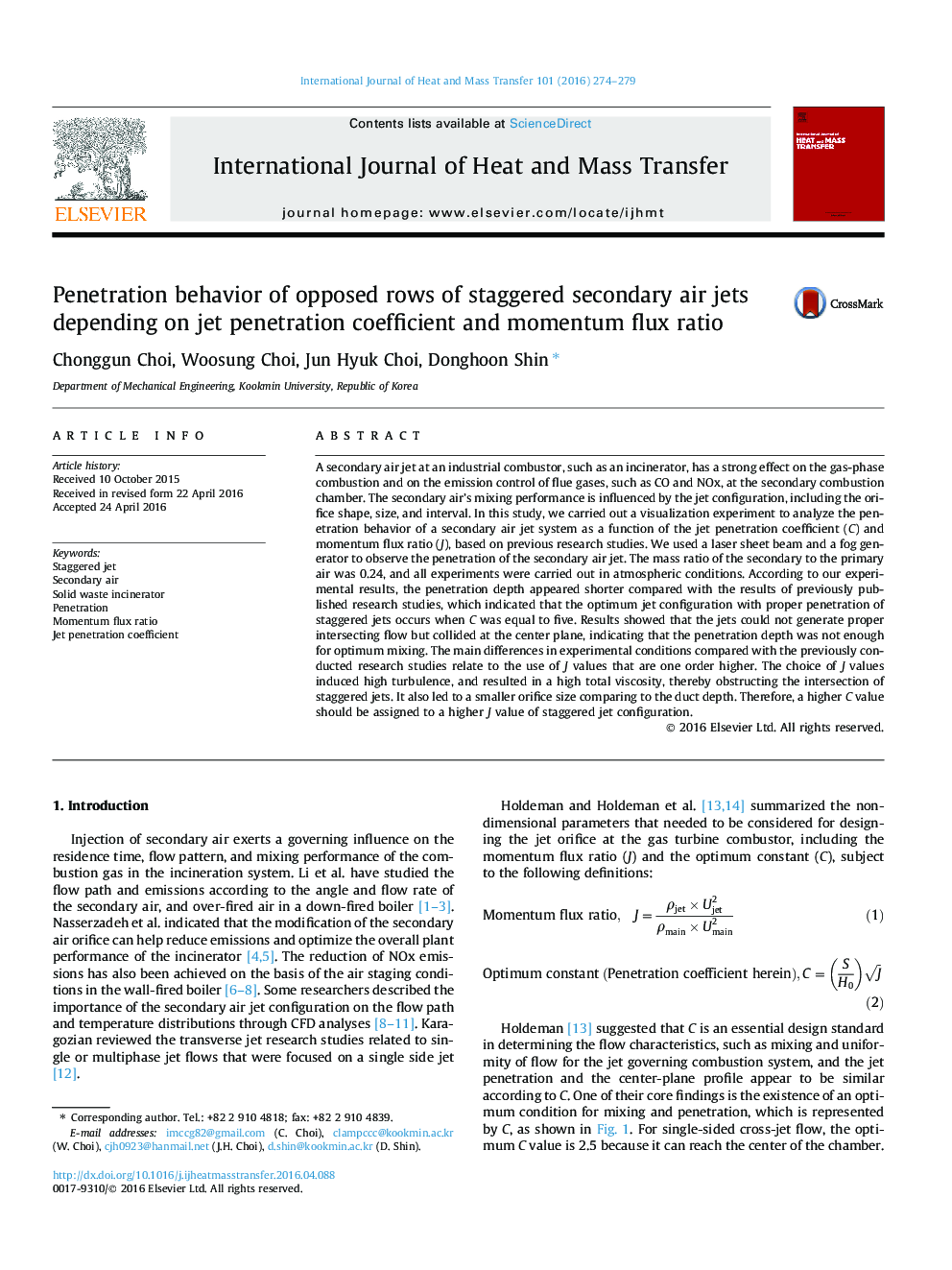| کد مقاله | کد نشریه | سال انتشار | مقاله انگلیسی | نسخه تمام متن |
|---|---|---|---|---|
| 7055216 | 1458041 | 2016 | 6 صفحه PDF | دانلود رایگان |
عنوان انگلیسی مقاله ISI
Penetration behavior of opposed rows of staggered secondary air jets depending on jet penetration coefficient and momentum flux ratio
ترجمه فارسی عنوان
رفتار نفوذ ردیف های مخالف جت های هوائی ثانویه جابجایی بسته به ضریب نفوذ جت و نسبت شار حرارتی
دانلود مقاله + سفارش ترجمه
دانلود مقاله ISI انگلیسی
رایگان برای ایرانیان
موضوعات مرتبط
مهندسی و علوم پایه
مهندسی شیمی
جریان سیال و فرایندهای انتقال
چکیده انگلیسی
A secondary air jet at an industrial combustor, such as an incinerator, has a strong effect on the gas-phase combustion and on the emission control of flue gases, such as CO and NOx, at the secondary combustion chamber. The secondary air's mixing performance is influenced by the jet configuration, including the orifice shape, size, and interval. In this study, we carried out a visualization experiment to analyze the penetration behavior of a secondary air jet system as a function of the jet penetration coefficient (C) and momentum flux ratio (J), based on previous research studies. We used a laser sheet beam and a fog generator to observe the penetration of the secondary air jet. The mass ratio of the secondary to the primary air was 0.24, and all experiments were carried out in atmospheric conditions. According to our experimental results, the penetration depth appeared shorter compared with the results of previously published research studies, which indicated that the optimum jet configuration with proper penetration of staggered jets occurs when C was equal to five. Results showed that the jets could not generate proper intersecting flow but collided at the center plane, indicating that the penetration depth was not enough for optimum mixing. The main differences in experimental conditions compared with the previously conducted research studies relate to the use of J values that are one order higher. The choice of J values induced high turbulence, and resulted in a high total viscosity, thereby obstructing the intersection of staggered jets. It also led to a smaller orifice size comparing to the duct depth. Therefore, a higher C value should be assigned to a higher J value of staggered jet configuration.
ناشر
Database: Elsevier - ScienceDirect (ساینس دایرکت)
Journal: International Journal of Heat and Mass Transfer - Volume 101, October 2016, Pages 274-279
Journal: International Journal of Heat and Mass Transfer - Volume 101, October 2016, Pages 274-279
نویسندگان
Chonggun Choi, Woosung Choi, Jun Hyuk Choi, Donghoon Shin,
